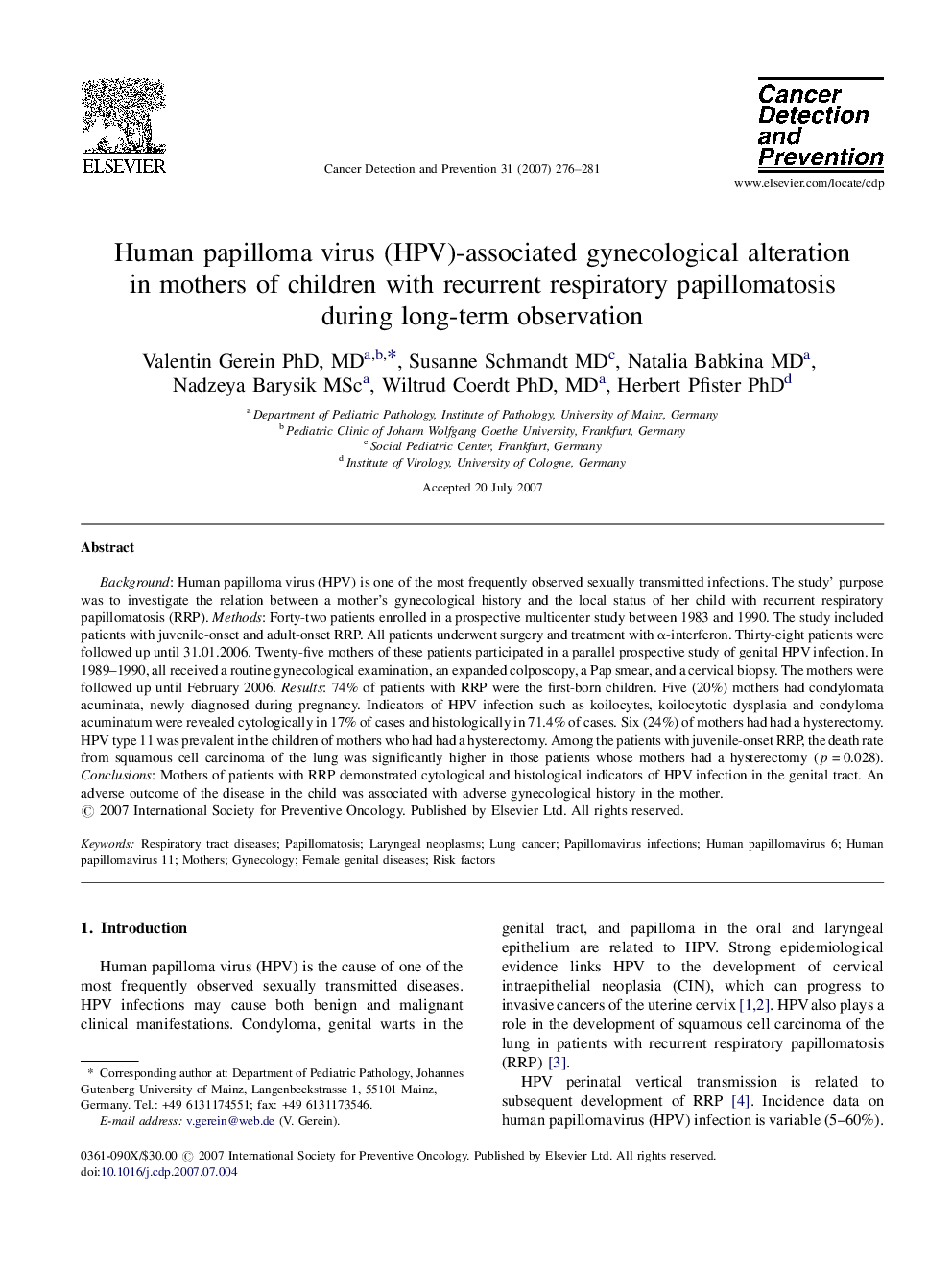| Article ID | Journal | Published Year | Pages | File Type |
|---|---|---|---|---|
| 2108638 | Cancer Detection and Prevention | 2007 | 6 Pages |
Background: Human papilloma virus (HPV) is one of the most frequently observed sexually transmitted infections. The study’ purpose was to investigate the relation between a mother's gynecological history and the local status of her child with recurrent respiratory papillomatosis (RRP). Methods: Forty-two patients enrolled in a prospective multicenter study between 1983 and 1990. The study included patients with juvenile-onset and adult-onset RRP. All patients underwent surgery and treatment with α-interferon. Thirty-eight patients were followed up until 31.01.2006. Twenty-five mothers of these patients participated in a parallel prospective study of genital HPV infection. In 1989–1990, all received a routine gynecological examination, an expanded colposcopy, a Pap smear, and a cervical biopsy. The mothers were followed up until February 2006. Results: 74% of patients with RRP were the first-born children. Five (20%) mothers had condylomata acuminata, newly diagnosed during pregnancy. Indicators of HPV infection such as koilocytes, koilocytotic dysplasia and condyloma acuminatum were revealed cytologically in 17% of cases and histologically in 71.4% of cases. Six (24%) of mothers had had a hysterectomy. HPV type 11 was prevalent in the children of mothers who had had a hysterectomy. Among the patients with juvenile-onset RRP, the death rate from squamous cell carcinoma of the lung was significantly higher in those patients whose mothers had a hysterectomy (p = 0.028). Conclusions: Mothers of patients with RRP demonstrated cytological and histological indicators of HPV infection in the genital tract. An adverse outcome of the disease in the child was associated with adverse gynecological history in the mother.
